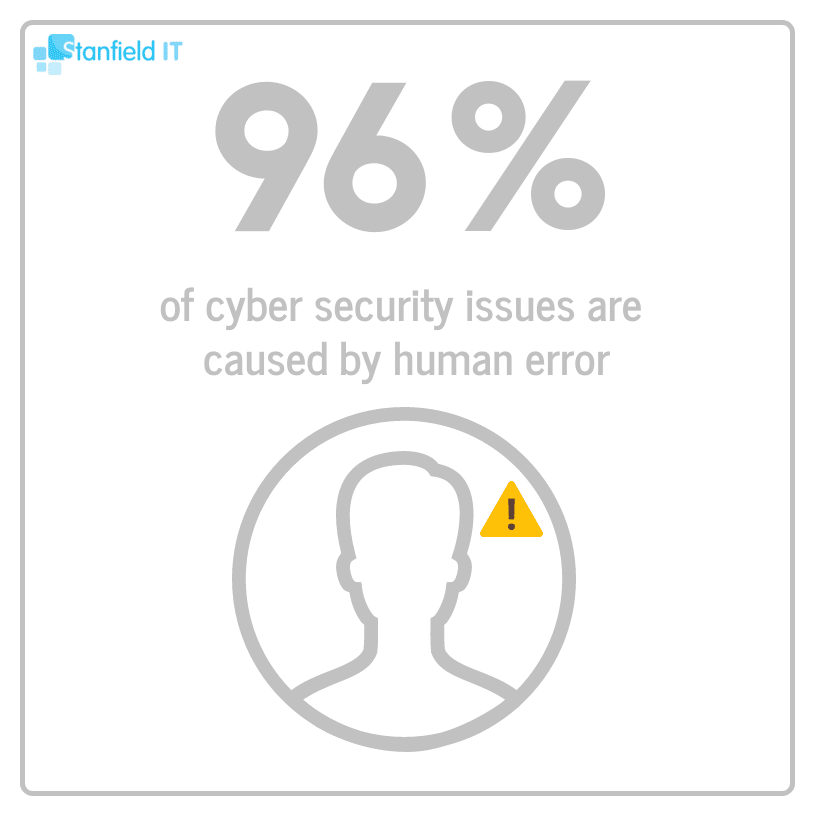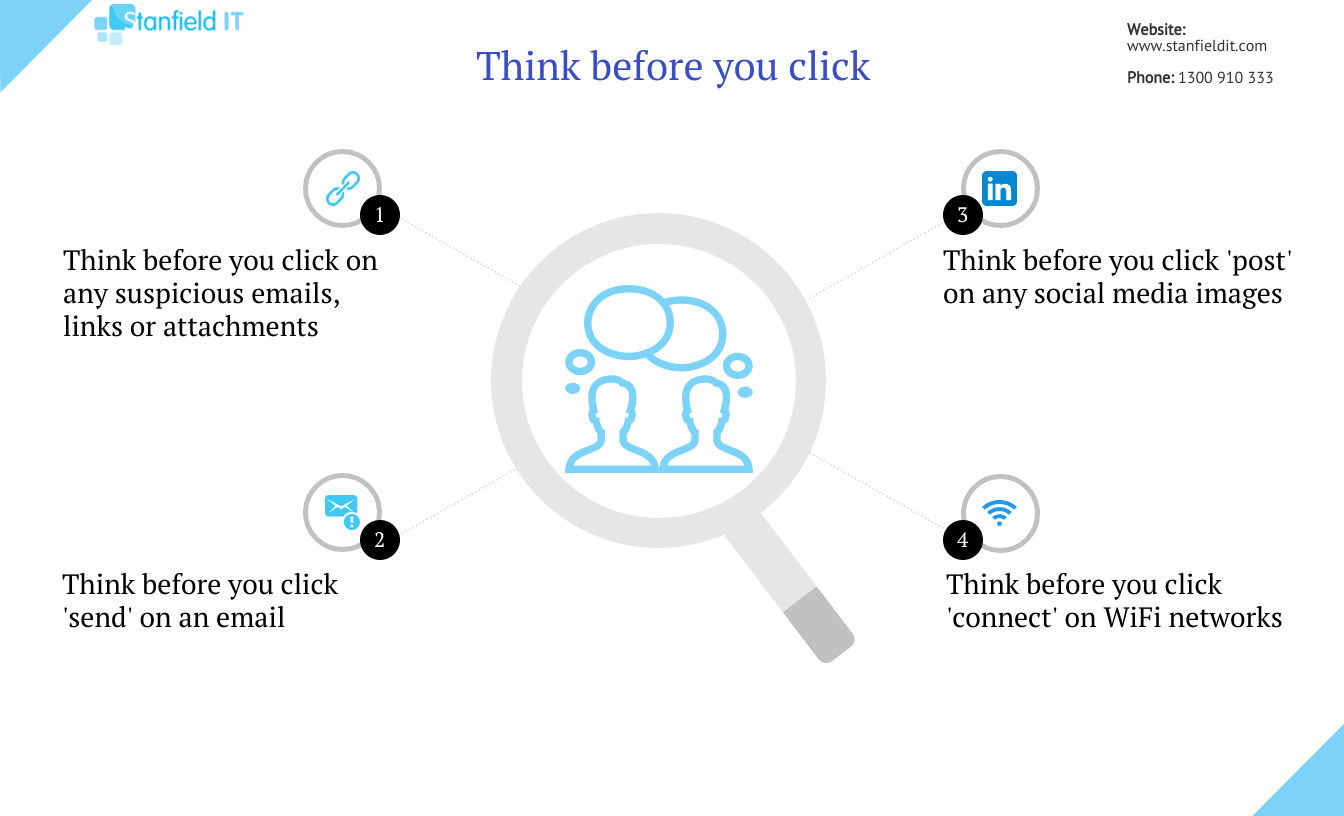After all, you’ve put a lot of blood, sweat and tears into your business. And you’re not going to let someone sitting behind a screen take your critical information and hold it for ransom.
But how do you stop this from happening? One great way to defend your business is by boosting your cyber security awareness.
So, in this article, we’ll give you 7 expert tips on how to increase your cyber security awareness and better protect your business.
Get Your Free Essential Eight Cyber Security Report
Learn:
-
- The cyber security gaps costing you time and money.
- Practical steps to upgrade your security measures.
- The hidden risks of poor security protocols.
- How to bolster your cyber security and aid business growth.
What is Cyber Security Awareness?
Cyber security awareness means having the ability to identify and understand the types of cyber security threats facing your business. It also means knowing the impact these threats can have, and how to prevent them.
Most businesses rely heavily on the Internet. So, cyber security awareness is an important factor for business owners to consider. Whichever industry you operate in, there are threats, risks and solutions that you need to be aware of.
With the rise of social media and mobile devices, the threat landscape is bigger than ever.
The risks associated with social media, for instance, include:
- phishing attempts made through direct messages
- malicious links shared on public posts
And then there’s remote working. Adopted by many businesses amidst global challenges, WFH is the new norm. It too has amplified the cyber risk businesses face, because employees are accessing company resources outside the secure business environment.
Cyber security awareness should be considered the first stage of a multi-level cyber security risk mitigation plan. The second and third are training and education respectively, as shown below.
| Awareness | Training | Education | |
| Attribute | “What” | “How” | “Why” |
| Aim | Recognition | Skill | Understanding |
| Time frame | Short-term | Medium-term | Long-term |
Adopted from https://csrc.nist.rip/publications/nistpubs/800-12/800-12-html/chapter13.html
Not really.
Research from the ACSC has found that almost 50% of small to medium businesses spend less than $500 on cyber security each year.
Not exactly a figure that instils much confidence in those of us working in cyber security. Especially because the use of social media, mobile devices, and remote working only continuing to rise.
But we’re not here to lecture you. We’re here to help.
Let’s take a look at why business owners need to keep cyber security awareness as a top priority in 2023.
Why you need to raise your cyber security awareness
The reasons why you need to increase your cyber security awareness could form an entirely separate article. Instead, here are just a couple of the big ones:
The preventative approach
This one is a no-brainer. One of the best reasons to increase awareness is to prevent an attack from happening in the first place.
Too often we’ll focus on fixing an issue after the fact. With a preventative approach, you’re addressing vulnerabilities before they become bigger problems.
There is a number of cyber security solutions that will help you prevent an attack. It’s a good idea to know which are relevant to your business.
People are the biggest risk
Regardless of whether you’re the CEO, IT Manager, Administrator, or a new hire, you need to understand that YOU are the biggest cyber security risk to the business.

All in all, better cyber security awareness means that you are reinforcing the idea that cyber security is everyone’s responsibility. And if there’s greater awareness then employees are more likely to implement basic security practices which can help reduce security risks.
The integration of social media, mobile devices, and remote working has only increased the risk of human error. For instance:
- Sharing sensitive business information on social media
- Using unsecured mobile devices
- Accessing company data via insecure networks while working remotely.
Moreover, introducing cyber security awareness training modules that cover topics such as safe social media practices, securing mobile devices, and ensuring cyber hygiene while working remotely can bolster your cyber security posture.
7 Tips to Boost Your Cyber Security Awareness
1. Do your research
The good news is that by reading this you’ve already taken the first step. If you’re a business owner, researching anything and everything cyber security-related needs to be routine practice. Doing your research is a surefire way to build and maintain your cyber security awareness because you’ll know exactly what to look out for.
To help with your research, there are a number of resources available to get you started.
In fact, here are a few that we recommend you check out.
- ACSC. The Australian Cyber Security Commission is dedicated to protecting individuals and businesses from cyber security threats. Here you can find step-by-step guides on how to implement cyber security controls and other ways to protect your business, customers and suppliers.
- Simplilearn. If you’re more of a visual learner then this short video breaks down some of the most common cyber security attacks.
- The Definitive Cyber Security Guide for Small-to-Medium Business. We put together this guide as a comprehensive information package on everything to do with cyber security.
2. Understand the threats
Part of doing your research is understanding the different risks that threaten your business.
The most common threats
There are too many threats to cover in this article. However, here is a list of 5 of the most common threats to small and medium businesses.
Phishing
Up to 90% of all breaches are caused by phishing attacks. Most of these are delivered by dodgy emails pretending to be legitimate business contacts. Because of the growing number of data breaches involving phishing, you’ll want to know how to prevent them.
Malware
Another big one. Malware covers a variety of intrusive threats including trojans, viruses and worms developed to steal data. Malware can come from unsafe website downloads and dodgy emails.
Ransomware
We’ve seen a 13% increase in ransomware attacks in 2022. During a ransomware attack, your business’s data will be locked and a ransom will be demanded. Generally, if you pay the ransom your data will be unlocked. However, the return of all of your data is not certain.
Human Factor
We mentioned this one before so we won’t beat it to death. But the human element continues to be a major contributing factor in cyber security breaches.
Passwords
Weak passwords that can be easily guessed pose a huge risk to businesses. Use complex passwords and update them regularly in order to minimise this risk. And please don’t use “password” as your password.
3. Make it a priority
Once you have a better understanding of the risks your business faces you’re in a position to make cyber security awareness a priority.
Depending on your position, this could be an easy process or one in which you get a bit of pushback. However, when everyone in the business is at risk, cyber security awareness really does need to be incorporated into the company’s mission.
So, in the next few tips we’re going to suggest some campaigns you can run today to help deliver this message.
4. Think before you click
“Think before you click” is a great campaign to run in your business for one reason in particular – it’s simple and easy to remember.
We spend so much time online that it’s generally easy to become numb to the risks of clicking the wrong thing. With many cyber attacks initiated through dodgy emails, it’s important to stop and think before clicking on any links or attachments.
I.e., think before you click.
So, here are a few ‘think before you click’ rules:

5. Create stronger passwords
Maybe the name of this one isn’t as catchy, but it is effective.
A strong password or passphrase can often be the last line of defence to protect your sensitive information.
So here’s a quick guide for creating stronger passwords:
- Make it long. The longer your password the harder it is to hack. Passwords should be at least 12 characters, but more than 14 is ideal.
- Make it unpredictable. You can make a password unpredictable by adding upper case letters, lower case letters, numbers and symbols.
- Make it different. It’s always a good idea to create passwords that are different from ones you’ve previously used. That way, if one password is cracked, your others won’t be at risk.
6. Do the update
Regularly updating apps and operating systems is a crucial part of good cyber security management.
Updates can do a lot of things, but developers commonly release them to address security concerns. If you’re not regularly updating your devices you could be exposing your business to unnecessary risks.
You can even set devices to automatically update, so there really is no excuse. This is an easy fix and a simple message to increase cyber security awareness in your business.
So…

7. Train end-users
Lastly, if you remember the strategy we mentioned earlier, you’ll notice at this point awareness and training start to overlap. That’s a good thing because an effective cyber security awareness campaign will always use training to engage users.
But what’s an end-user? Good question.
An end-user is the person who uses or is intended to use the final product or service. In IT, we often refer to end-users as those using a business’s desktops, laptops and devices.
I.e. your employees.
You’re probably starting to piece together why end-user training is so important.
92% of all cyber security breaches… you get the point.
If end-users are involved in the majority of breaches then they really are the first line of defence.
Benefits of End-User Training
- Simple and interactive. End user training is simple and easy to understand. As a result, users often see greater overall impact and retention.
- Cost effective. Many end-use training services now come with an extremely low price tag and won’t hook you into long-term contracts.
- Better protection. End-user training is designed to reduce the likelihood of users contributing to a cyber security breach. Therefore, reducing cyber breaches altogether.
Improving your cyber security awareness starts now
Developing your cyber security knowledge might be intimidating at first. It’s easy to get overwhelmed, but don’t let this deter you.
By boosting your cyber security awareness, you’ve taken the first step in understanding what is required to improve your business’s cyber security altogether.
Finally, if you’re looking to get an idea of how well-protected your business is, you can start by completing a short cyber security assessment. You’ll learn where your cyber security weaknesses are, and get a few tips on how to improve.
